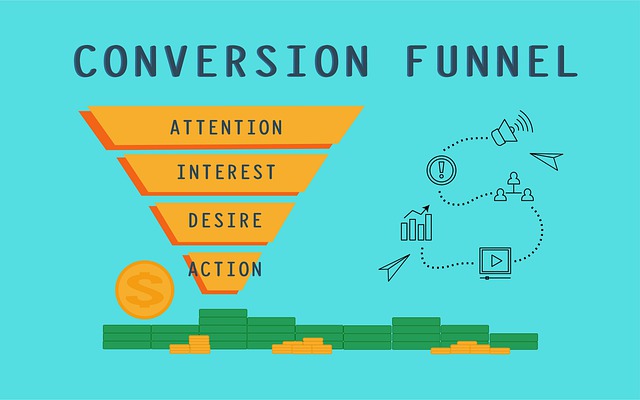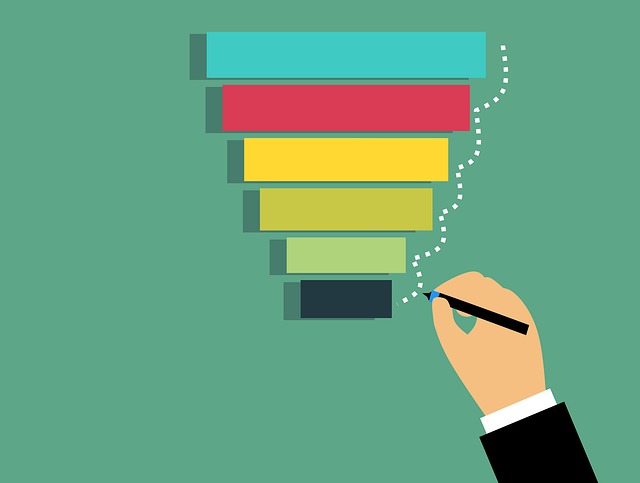Discover the new model of marketing funnels: Flywheel
You've probably heard of the term sales funnels in digital marketing. Well, a new term has made its way into this wonderful world of digital marketing, flywheel.
In inbound marketing, sale funnels have been a very useful model for understanding the customer journey and determining the structure of conversion strategies for a number of years.
With the flywheel, however, we move into another dimension. Instead of a funnel, think of the Customer Journey as a wheel that turns and turns…
Do you want to learn about this term that’s revolutionising the marketing world? In this article, you'll learn all about the flywheel.
But first, What even is a flywheel?
The flywheel is a new way of looking at marketing and sales that gives more importance to aspects that weren’t considered before, such as user loyalty or the possibility that users will continue to buy an additional product, which we know as cross-selling or updated versions, up-selling.
A flywheel is designed to give brands additional visibility, with interaction between the customer and the company from the first minute until the purchase of the product or service.
However, this change isn’t the only one. The flywheel goes much further and includes some changes in the fundamentals of marketing, both online and offline, such as the sales funnel. It doesn't replace it, but it transforms it from an end point into a continuous cycle where what matters is that the customer buys and buys again.
What’s the difference between the traditional funnel and the flywheel?

If you are interested in this new term and want to incorporate it into your marketing strategy, you should know the differences between these terms.
The first important point is where the customer is. If you know the traditional sales funnel, you know that the passive subject goes through the different parts of our funnel. In the flywheel model, however, the customer occupies a completely different position, he is the central axis of the process and the protagonist around whom everything revolves.
And why? Because the customer becomes part of our own content. If we have a satisfied customer, we can catapult our sales. Therefore, we need to give them a voice.
In conclusion, we can say that the flywheel model prioritises the customer experience.
The phases of the flywheel model

Since you already know the definition and how the flywheel model differs from the traditional sales funnel, it's time to look at the different phases of how it works.
Let's take a closer look at each of them.
Attraction
This first phase is mainly about creating content and experiences that are attractive to the user. You should try to generate leads by delivering value.
To achieve this, you can use these tactics:
- Publish blog content.
- Establish a good keyword and SEO strategy, both on and off page.
- Social media presence, either organic or paid.
In this phase, you invite users to start the journey themselves. You put valuable content in their hands, especially free content, so they can decide for themselves whether they’re interested in your brand or not.
Engagement
We reach the stage where we can build a lasting, long-term relationship with the target who’s on our flywheel. We can achieve this by suggesting solutions and providing fully personalised customer service throughout the buying journey.
At this stage, you can implement the following strategies:
- Email marketing campaigns.
- Ebooks or downloadable templates.
- Personal calls.
- Webinars.
- Free product demo.
Pleasure
We’ve named this last phase like this simply because we know that storing good memories contains a very positive emotional charge, and you remember them better than those that are more neutral.
This is exactly what we want to achieve at the end of the journey. We make sure that we give our clients a unique experience on their journey through all our services. This way, they’ll have a pleasant memory of us.
To do this, you can use the following tactics:
- Fully personalised email marketing campaigns
- Create product referral programmes
- Offer exclusive webinars or seminars for members of your brand
How to get from the sales marketing funnel to the flywheel

Are you ready to use the flywheel in your new marketing strategy? The first step is to adapt how your team works and thinks and, as with any paradigm shift, it takes patience and a lot of hard work.
To help you with this important transition, we'd like to offer you a little 3-step strategy to help you move from the traditional sales funnel to a flywheel that’s entirely tailored to your needs.
1. Measure the flywheel
As with any change, first you need to know where everything stands. To do this, we need to go back to the previous section where we showed you the three phases of the flywheel (attraction, engagement and pleasure) and check how they’re starting to focus.
The first point is to check what activities the company is doing to attract these three phases we mentioned. Usually you’ll find several initiatives. We recommend you to focus on the most important of them.
For example, you can have a complete content marketing strategy to engage the customer by involving them with a lead generation programme and free trials, and we’ll delight them with a unique after-sales service.
Then we’ll set KPIs for each phase. Targets can be set for website visits, quality leads generated or customer conversion at specific stages.
2. Delighting customers
Once you get past the first phase, all your resources will be focused on getting as many customers as possible. But this new model will invite you to turn the wheel, speed it up and invest in the final phase: customer delight.
At this point, we’ll examine the activities and programmes that lead to customers going through the conversion cycle to determine if they’re immersed in the process itself or in the needs of the customer.
Then we’ll create a list of changes that need to be made to focus all resources on customer delight.
3. Conflicts
Conflicts will always exist, and the best thing you can do to avoid them is to get the most common potential stumbling blocks out of the way, such as conversion rates at different stages, customers who convert and those who drop out.
One of our recommendations is to keep a close eye on the metrics in the first phase so that we can identify some of the issues that may lead to conflict.
We mustn’t forget one of the main sources of conflict: the team.
The lack of communication and understanding between team members leads to misunderstandings, especially because they’ve adopted the structures of the traditional sales funnel.







